Technical specifications as listed by Aqua Computer: (well more of a key feature list and sales pitch which is quoted from the Aqua Computer website):
“- modulares system
– extremely high cooling performance
– extensible in all directions to unlimited size
– no welding residues (since no welding is performed during production)
– can be disassembled, for example for cleaning
– radiators with two separated loops available
– optimized flow resistance
– fins are free of coating for good heat transfer
– pump modules and reservoirs available
– exchangeable side panels for individualisation (brushed stainless steel, anodized aluminum in black, blue and red colour)
– fin spacing optimized for low fan speeds and excellent passive cooling performance
– cooling liquid has no direct contact to aluminum (pipes are made of copper)
– high precision production for perfect fit
– riveted threads for fan installation
– comprehensive accessories available (reservoirs, pump modules, stands, filters, sensors, …)
– many models are also available with copper fins for higher cooling capacity
– approved for a pressure of up to 0.8 bar
– custom made variants for a pressure of up to 5 bar are available upon request.”
Again from the Aqua Computer website…..
“Base component of each radiator is a tube/fin element consisting of 21 copper tubes with aluminum or copper fins and a stainless steel flange. On both ends, terminals made from Delrin are mounted, each equipped with o-ring seals and securely fastened by screws. A recess around each connection thread of the terminal can be used to connect flatly to another radiator using a small adapter – without using bulky tubing. Water flow is predefined by design: Radiators mounted side by side will be connected consecutively; radiators mounted on top of each other will be connected in parallel. The radiator can also be extended in length: Connector modules (sold separately) can be used to connect two tube/fin elements.
“All radiator types have an equal width of 146 mm and fit perfectly into standard 51/4 drive bays. Radiator height (without pump modules) is 63.5 mm, radiator length (without pump modules) can be calculated by adding 44 mm to the specified fan dimensions (for example model 360: 360 mm + 44 mm = 404 mm).
“All threads are G1/4 and all fittings from the Aqua Computer web shop are compatible.
“For special configurations, all radiator sizes are available with two separated coolant loops. For these radiators, approximately 70% of the fin surface is used for the primary loop and approximately 30% for secondary loop. Both loops are sealed against each other, there is no transfer of coolant from one loop to the other.
“Radiator versions with integrated pump module and reservoir reduce space consumption and save time and effort.”
So one of the big features promoted here is the modular nature. Unfortunately I have no other AMS components so I was unable to play ‘Meccano’ and put different configurations together. But that is not the real purpose behind this write-up, we’ll be focusing on performance, but this is definitely a unique feature set that the AMS rads bring to the table.
Dimensions Measured on the radiator tested (retail unit):
Radiator Core Dimensions:
Fluid volume capacity of the AMS was difficult to correctly measure due to the core design, so it is left blank intentionally.
The AMS has a finned tube core construction, not the flat tube and corrugated fin type most commonly seen in PC water-cooling rads.
The finned tube core is based around 21 copper tubes which are open ended at each end of the core, like this in fact:
The flow path is determined by the machined Delrin “terminals” which attach to each end of the core assembly. The modular design of the AMS means that it can be broken down “relatively” easily, although without a good reason there is no need to.
As already mentioned it is the machining inside of the Delrin terminals which determine the coolant flow path through the 21 tubes. In the photo below the port facing up at the bottom is designated as the inlet port to the core from the port end terminal. If you can imagine the return end terminal pictured at the top flipped over so the two terminals are facing each other you can put together the flow path in your mind. What we end up with is a quad pass flow through the tubes with each pass having either 5 or 6 tubes in parallel.
There has been discussion on which “face” should be the hot side (warm coolant) on the NON U-Flow rads and which side (face) should be receiving the fresh intake air. This is the second radiator in the group which I have tested flow direction both ways for a comparison.
Testing on the Aqua Computer Radical 2 radiator showed that OptiFlow did have a performance advantage over reverse flow. So for the AMS I only tested reverse flow with Push Only fans at 1.0 gpm for each of the 3 fan speeds, while OptiFlow was tested at all 12 data points.
Again I thought it unusual that Aqua Computer have chosen to place inlet/outlet direction arrows on the ports, with no info or reasoning as to why. As with the Radical 2, I assumed that the coolant flow path (OptiFlow or Reverse) would make a difference in performance and the required port for coolant inlet would be different depending on the installation orientation and air flow direction – think vertical front mount Vs. horizontal roof mount. We’ll see how much difference, if any OptiFlow Vs. Reverse Flow makes later when we look at the data.
The core itself is quite a thing of beauty, with all the fins perfectly spaced down the tubes.
My averaged fin count was 8 FPI (Fins Per Inch) and the pic shows just how evenly the fins are spaced on the tubes – Perfect!
Finish and Features
The AMS 360’s raw copper tubes and fins are the first stunning feature that you just can’t help but notice. It is simply a thing of beauty, which like the Radical 2 might be best used in a Push only installation where the core can be shown off!
The next thing that you might notice is the stainless steel side panels. These are a great looking design features that gives another classy element to the AMS.
After recovering from the initial shock of how good this radiator actually looks, you might start to question the size of it. In particular it’s width. While being a 360mm radiator by definition as it accepts 3 x 120mm fans the actual width of the AMS is 146mm.
At this stage I will assume (maybe incorrectly) that the 360mm AMS has the same width core including the same number of tubes as the AMS 420. The difference between the two models being longer tubes and different side rails.
Consideration for this extra width should be taken into account and space available in your chassis prior to purchase. This will not fit in all places that a “normal” width 360mm radiator will.
The AMS comes equipped with 6 ports, 3 x inlet and 3 x outlet, so there are plenty of opportunities for dedicated drain/fill ports.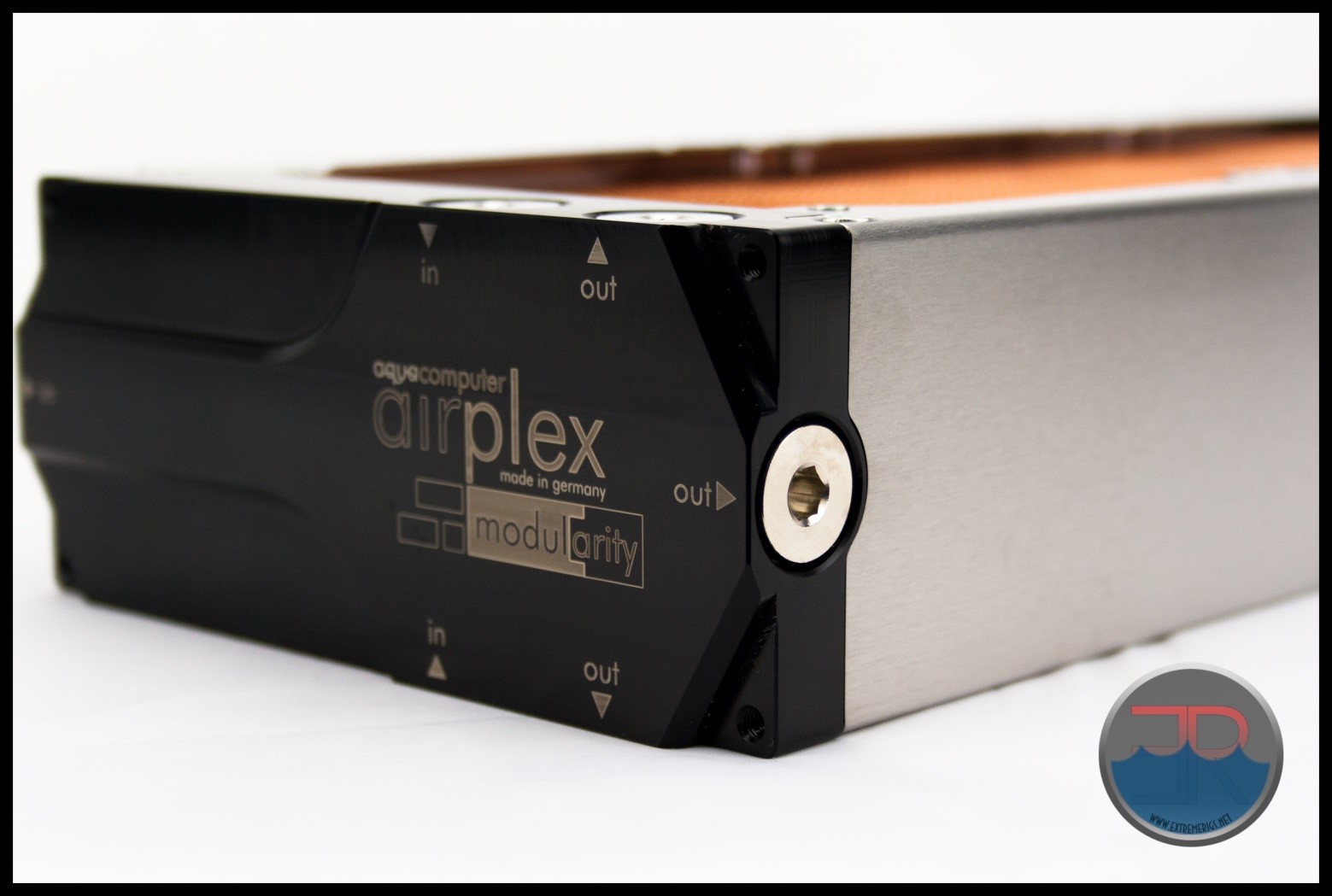
There are no ports on the ends of the terminals, but there are ports on the sides. These port locations are unique to the AMS (I think) and should come in very handy as fill/drain ports for users who have side mounting radiator installations in mind.
The return end terminal has no ports machined. Due to design and flow path they would not be very effective anyway, at best drain or filling half the tubes.
While we’re still on the topic of ports, I must mention the all 6 ports are recessed into the port end terminal. This recessing results in a nice flush finish for unused ports when the port plugs are fitted, and a clean professional look when fittings are used that fit inside the machined recess.
However the recessing of the ports is just 19mm wide.
This 19mm width of the ports means that not all fittings will be usable without the use of short extensions. So consideration of fittings you intend to use is advisable. In the next photo it is clear to see that a Bitspower 3/8 x 5/8 compression fitting which measures 21mm across will not fit directly into the recessed port. It would have been nice if the necessary extensions to use such common fittings were included.
As mentioned previously the terminal ends are each machined from single pieces of Delrin which really is an amazing piece of design work – and precision machining. This particular parallel flow path is a design feature unique to the AMS. As with the Radical 2’s parallel flow path my concern with this design is whether or not the flow can remain turbulent or if will drop flow rate to be laminar and significantly reduce cooling performance. We’ll see in the performance results later.
So we have a beautifully crafted radiator which certainly brings some good looks to the table. There are some interesting and unique design features but to counter these positives there are a few design features which I feel could alienate the AMS from some potential users.
Let’s see how it performs….







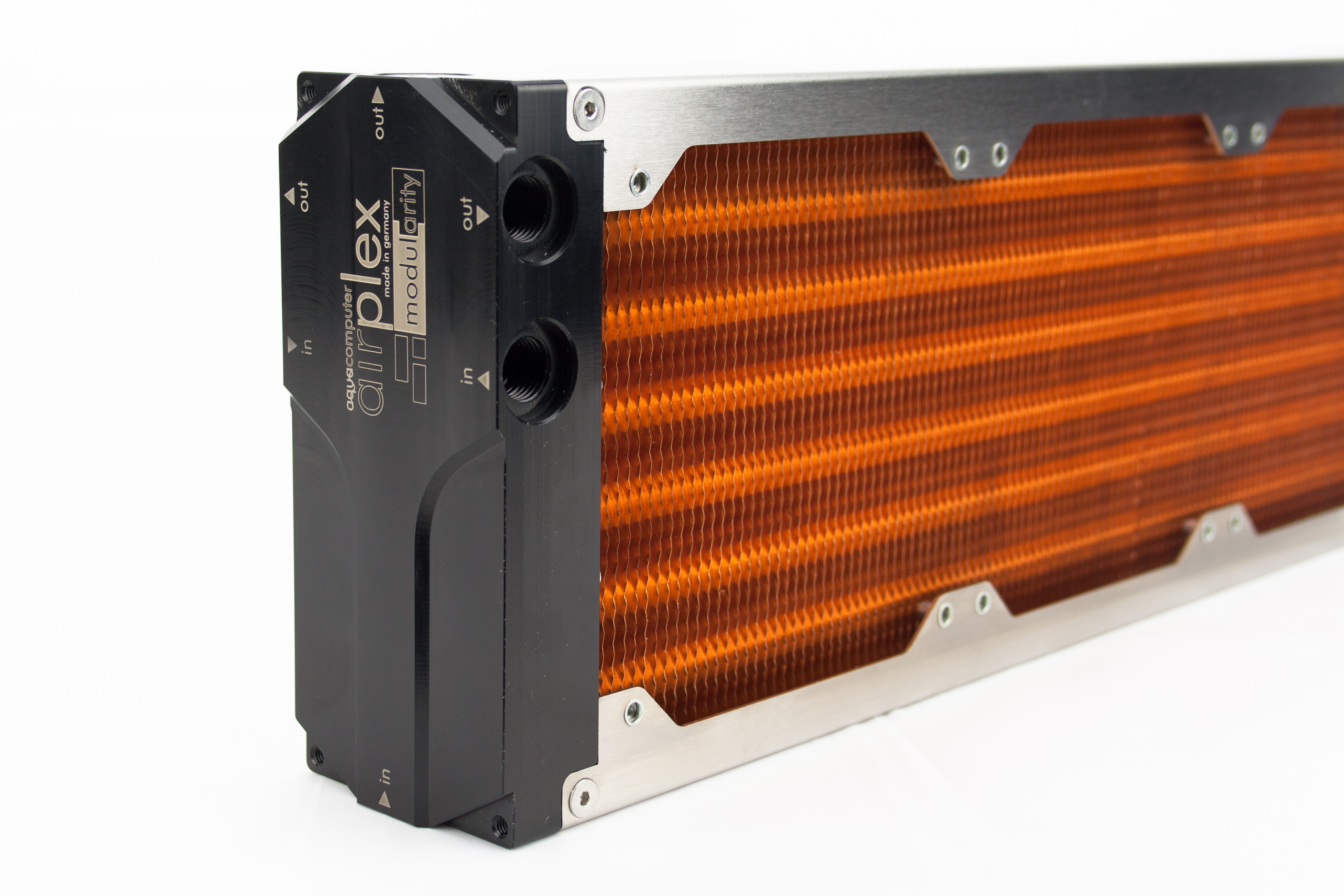


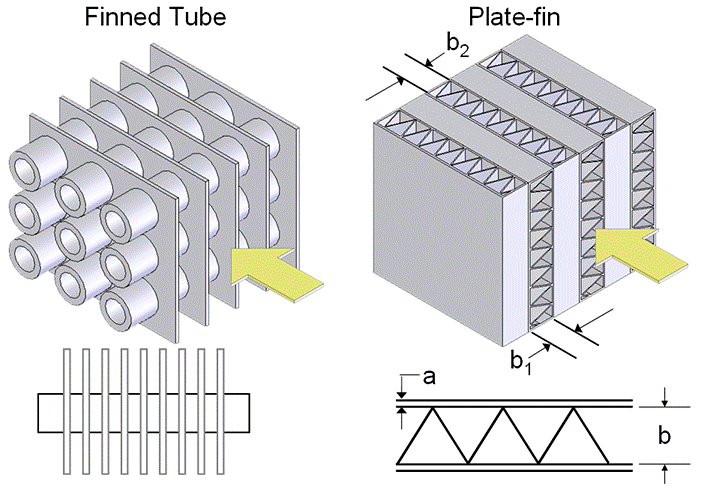
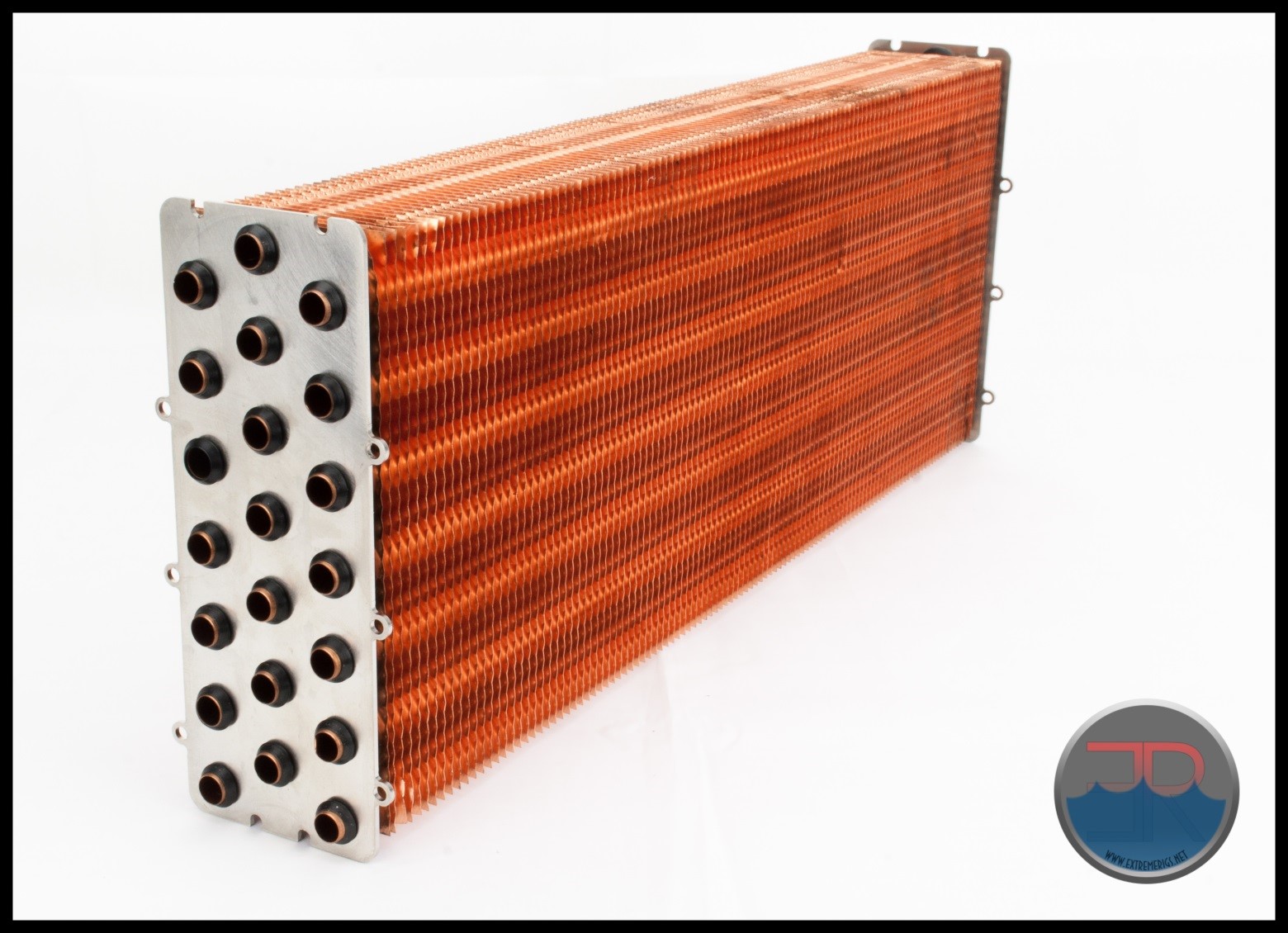
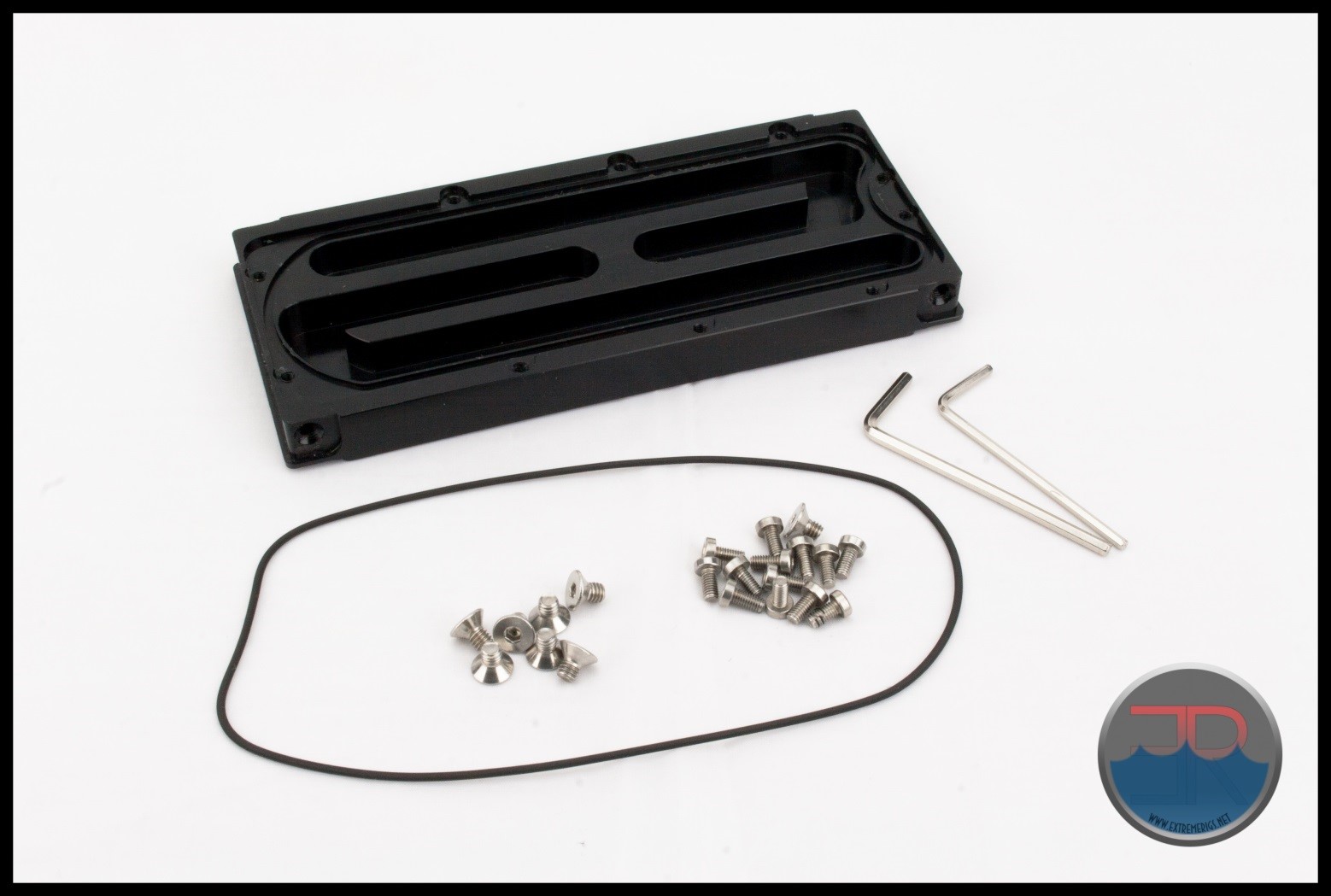
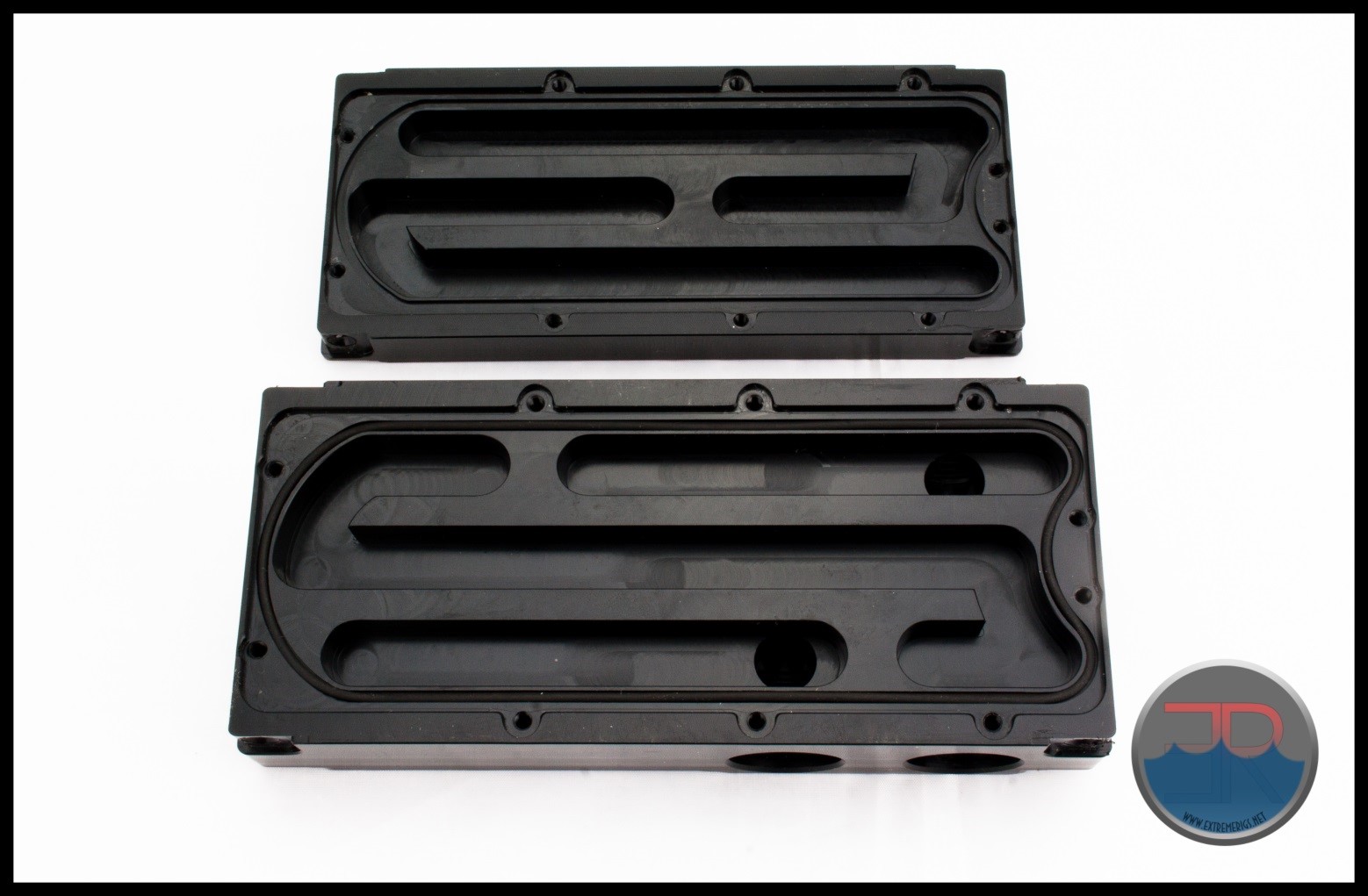
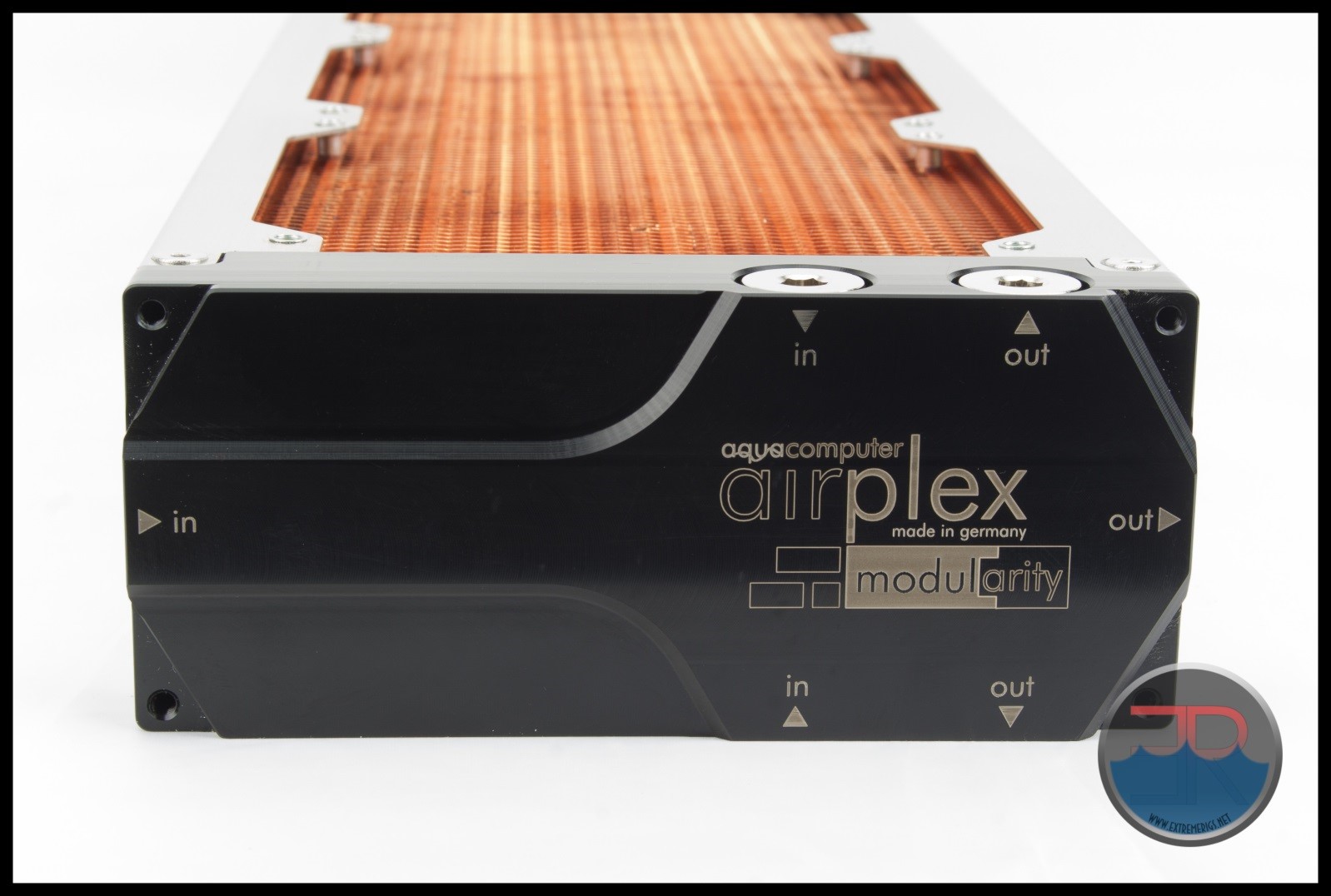
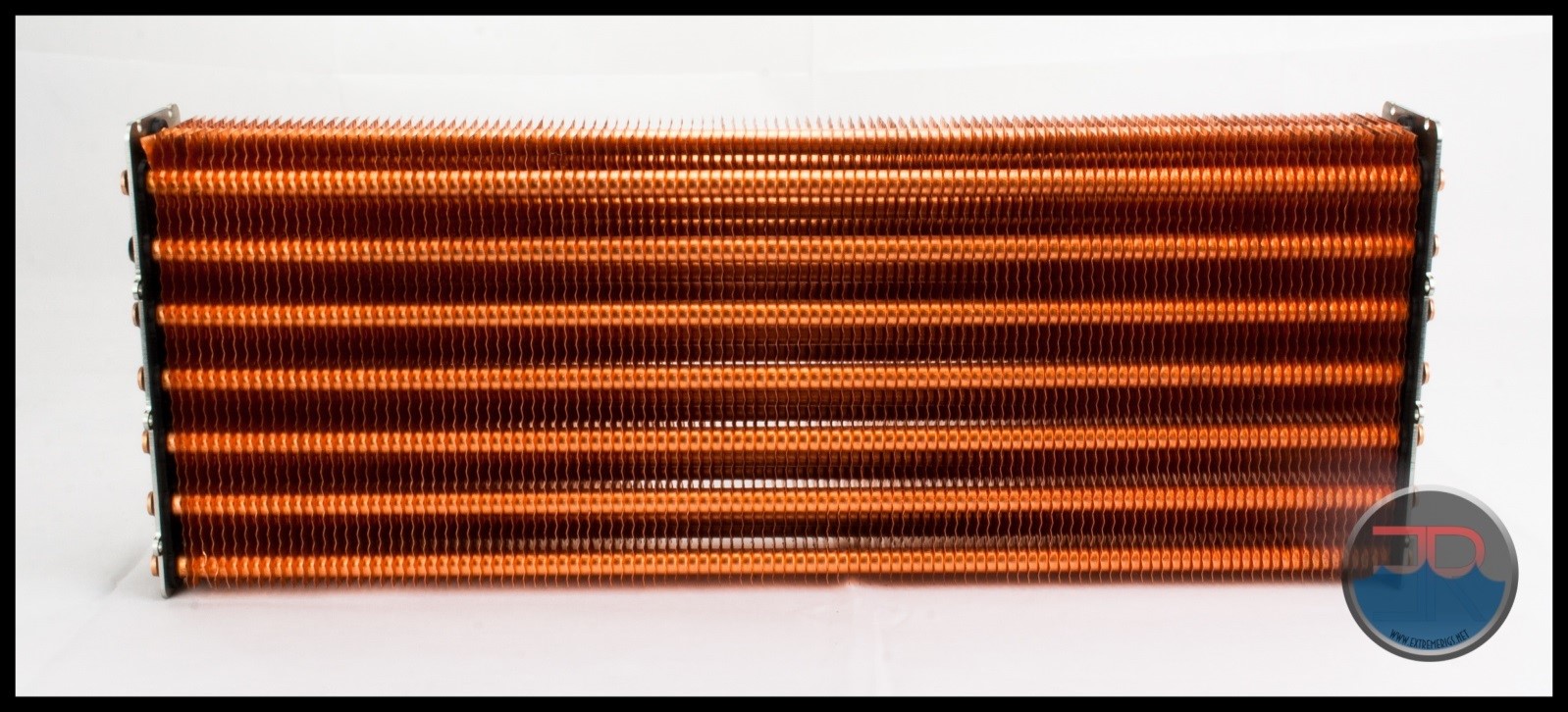
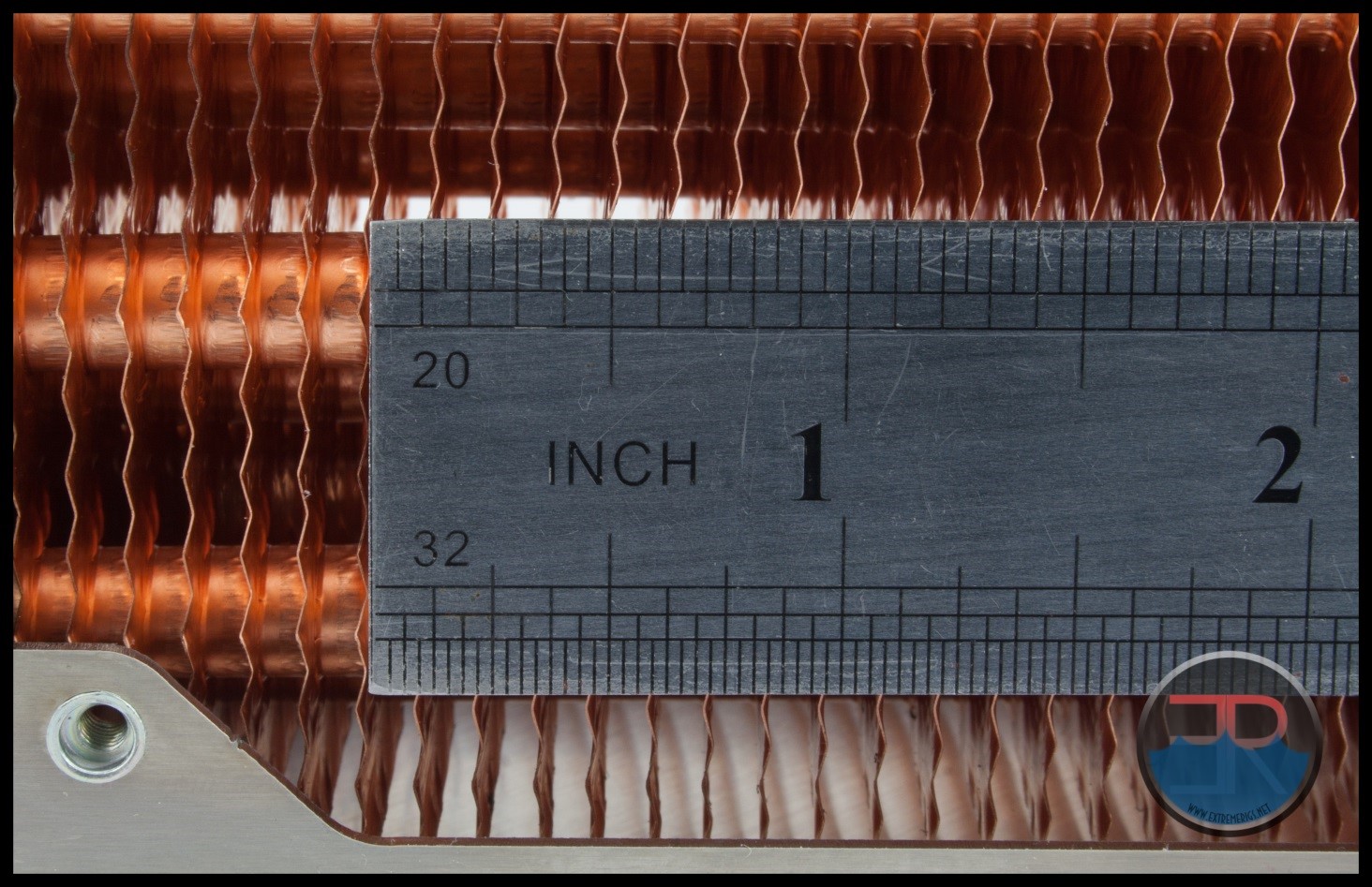
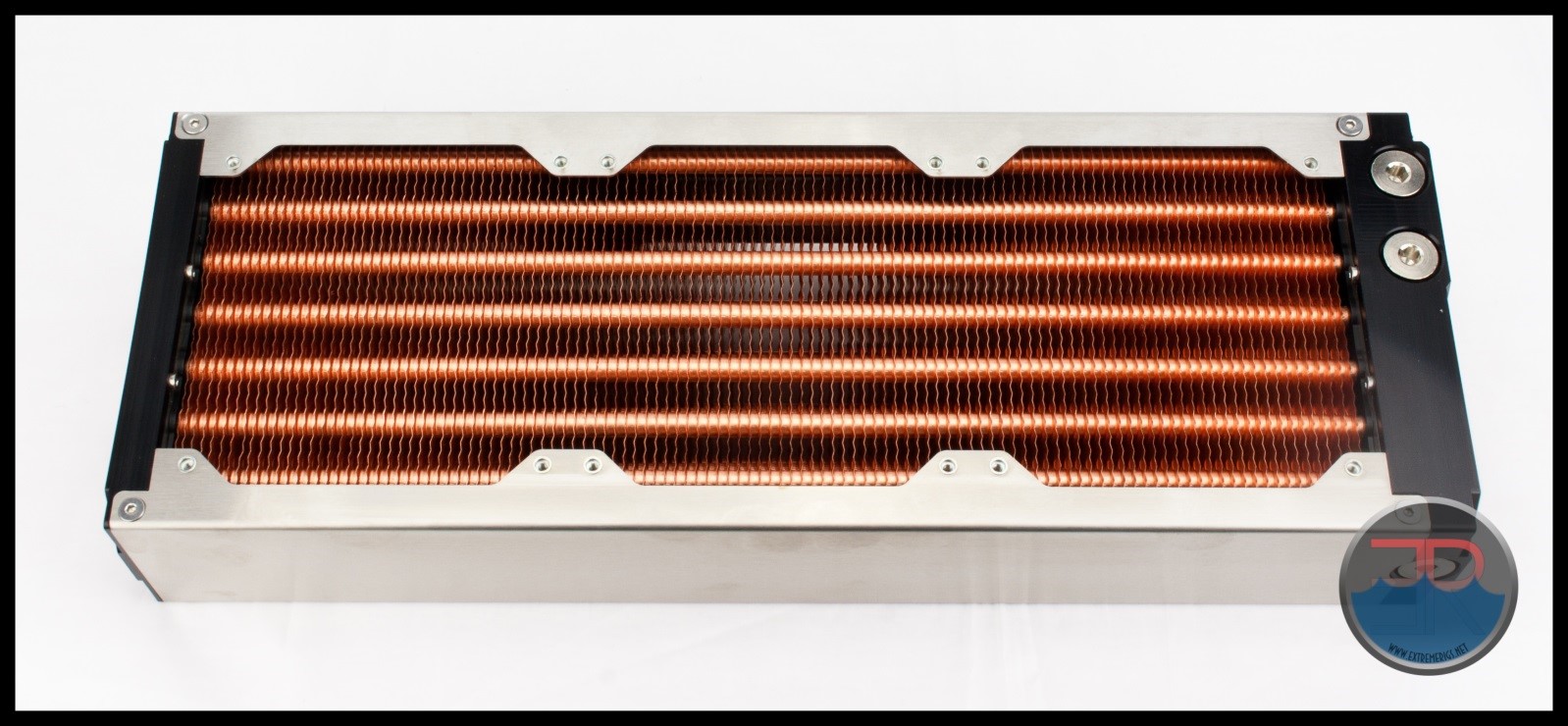
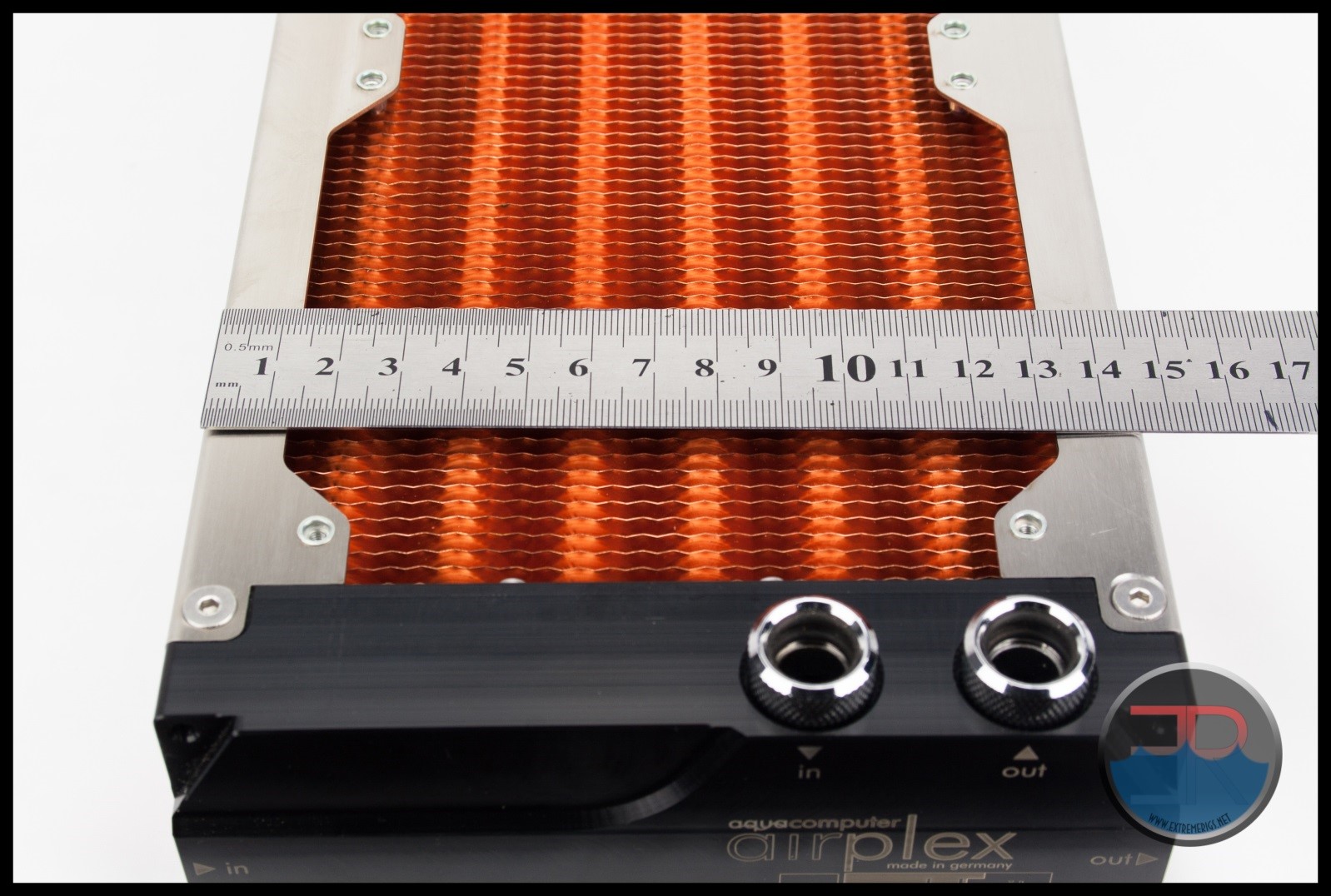
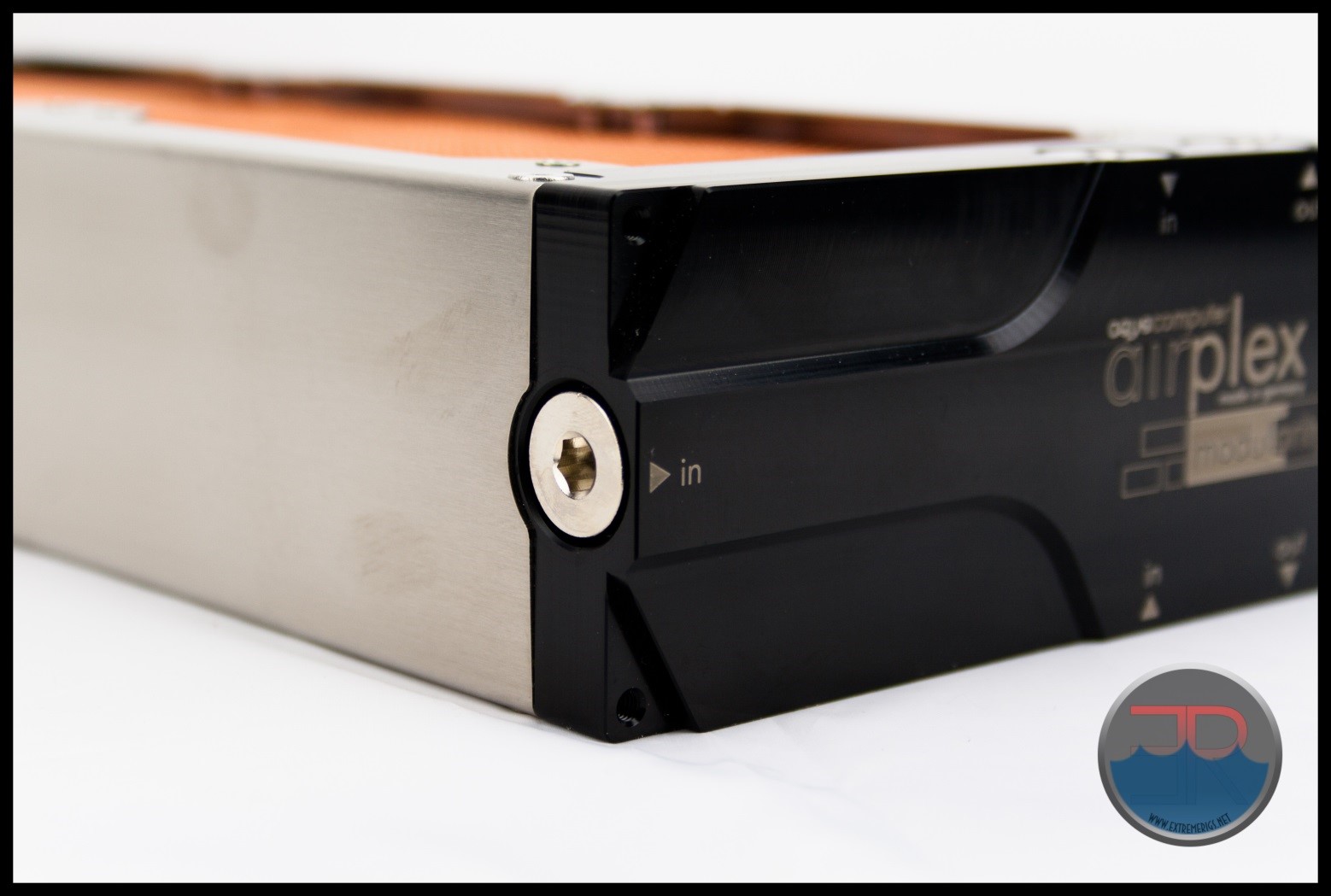
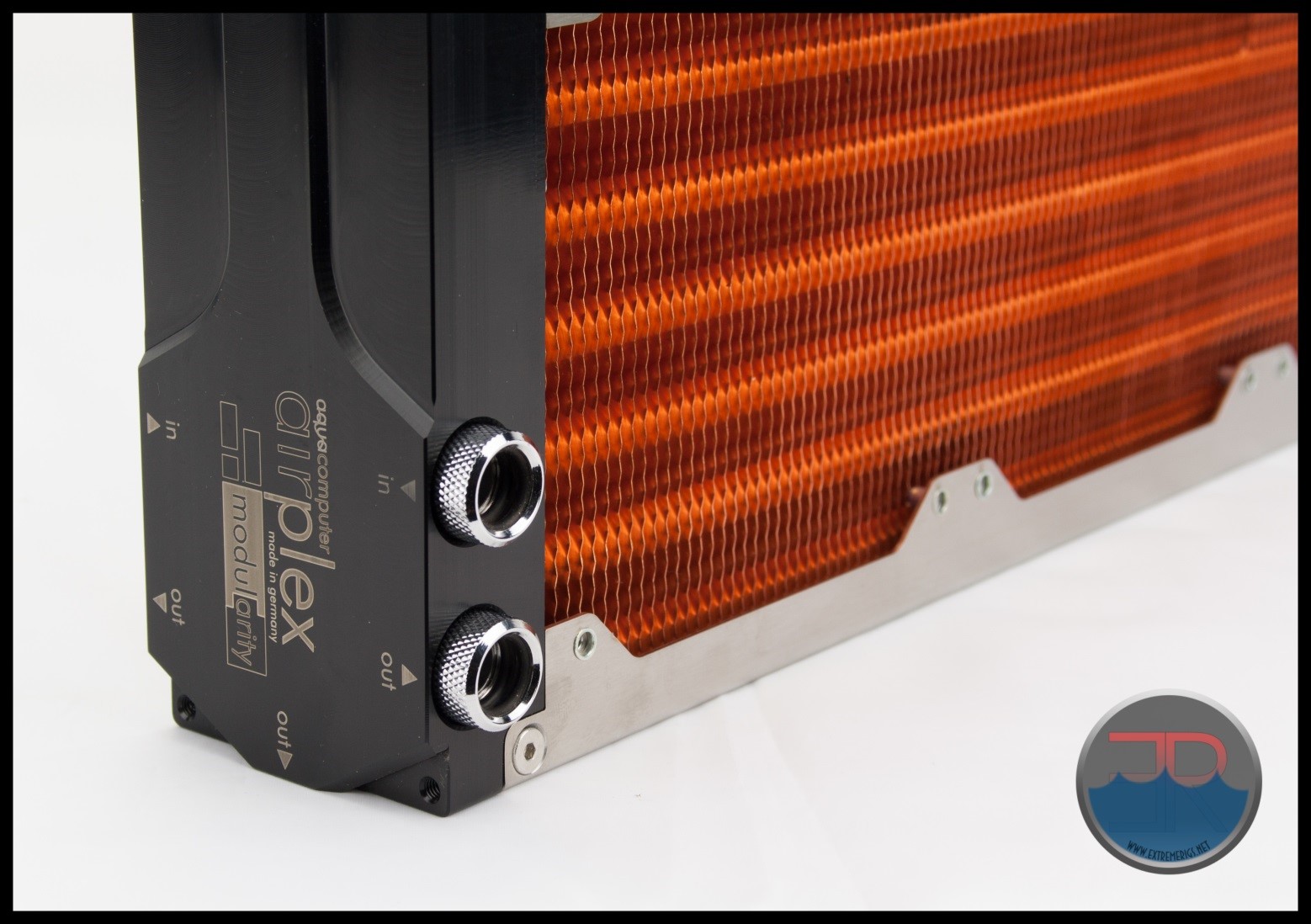
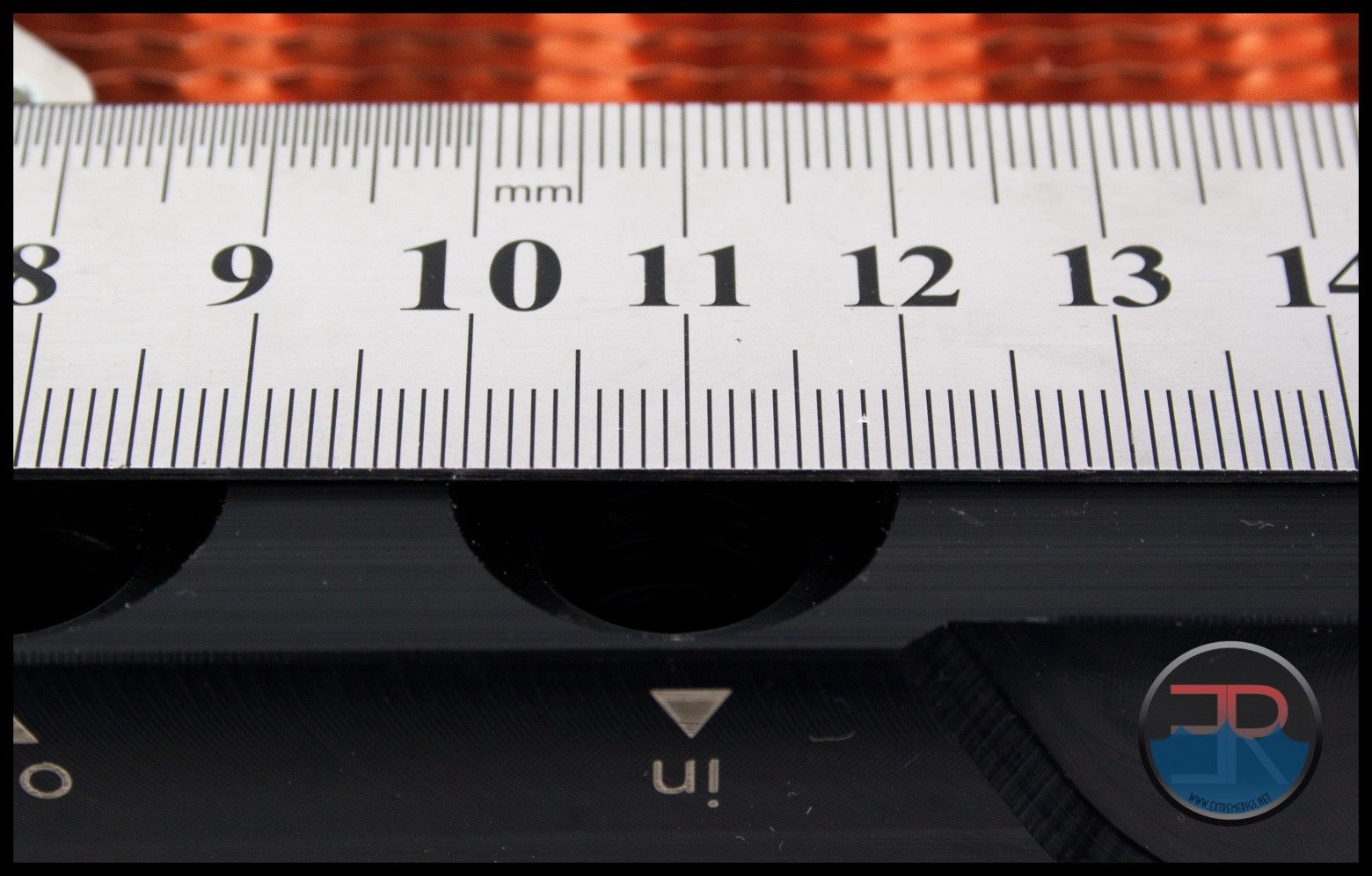
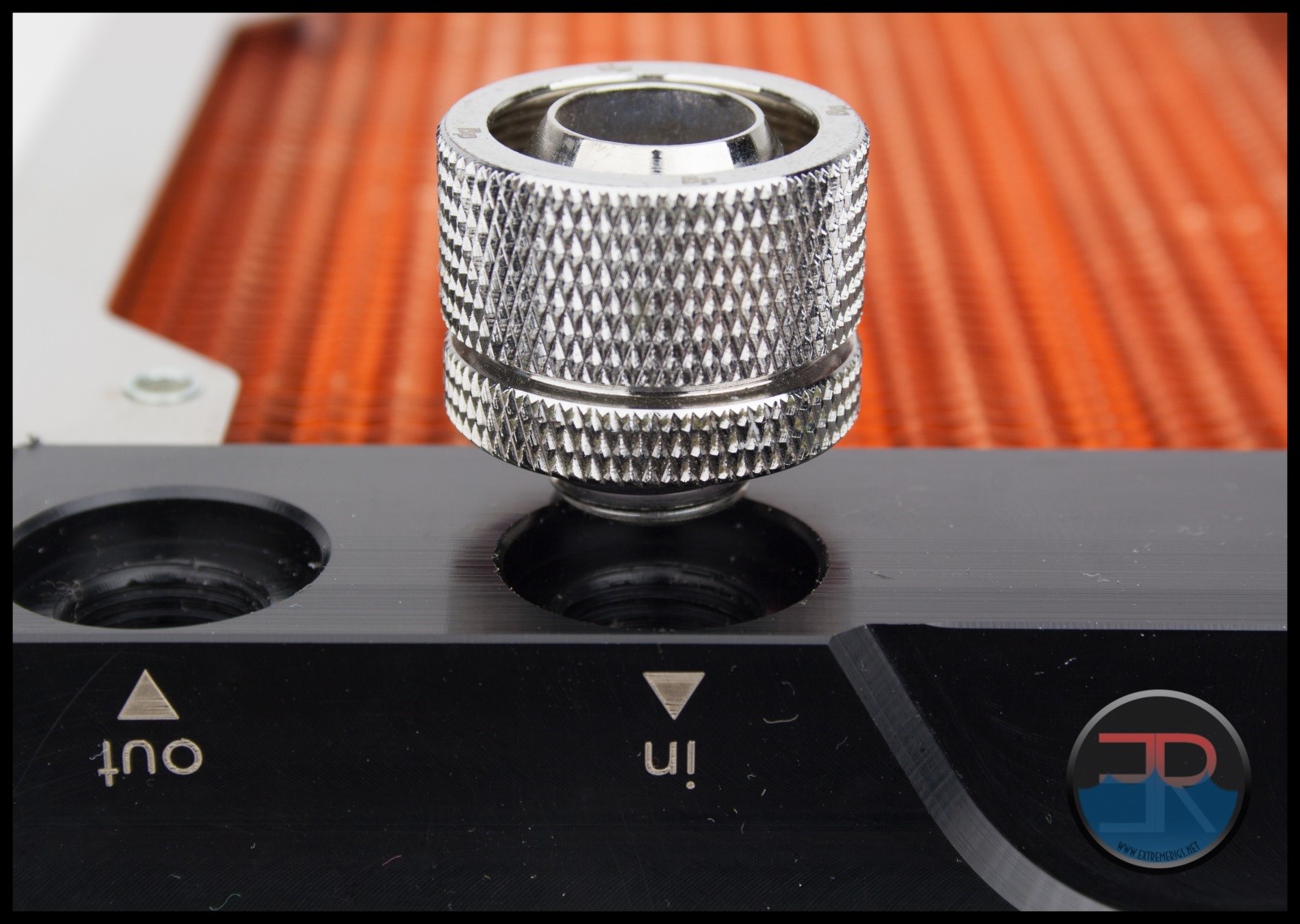



[…] Aqua Computer AMS Copper 360mm Radiator Review […]
[…] UT60 360 Radiator Alphacool XT45 360 Radiator AquaComputer Airplex Radical Copper 360 Radiator AquaComputer AMS 360 Radiator Coolgate CG 360 Radiator Coolgate G2 360 Radiator EK SE 360 Radiator EK PE 360 Radiator EK XTX 360 […]
[…] […]
Comments are closed.